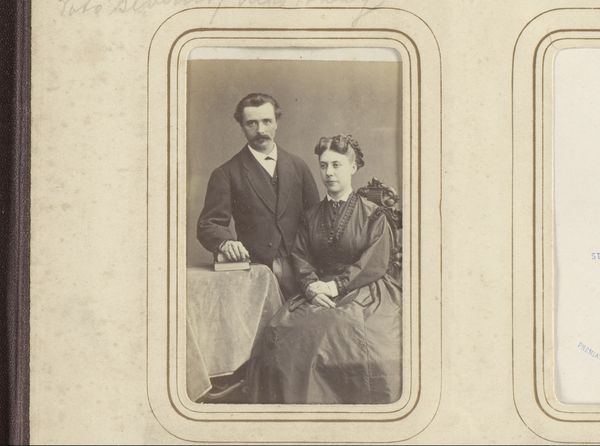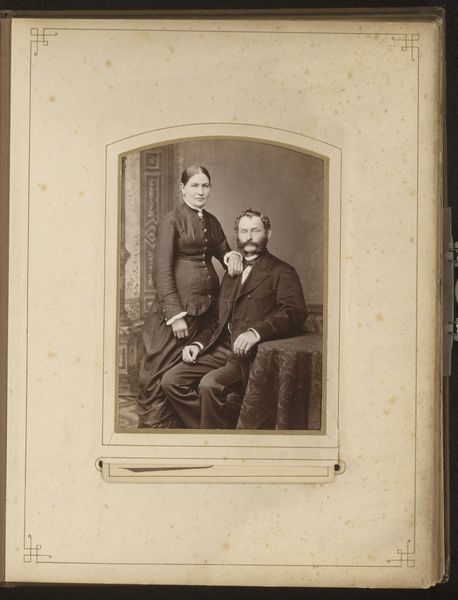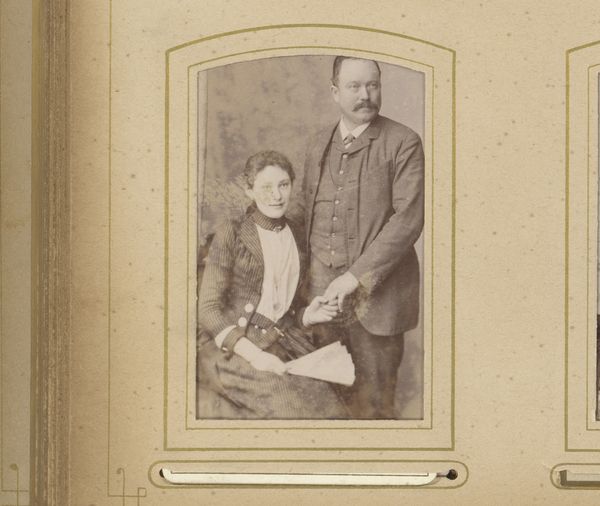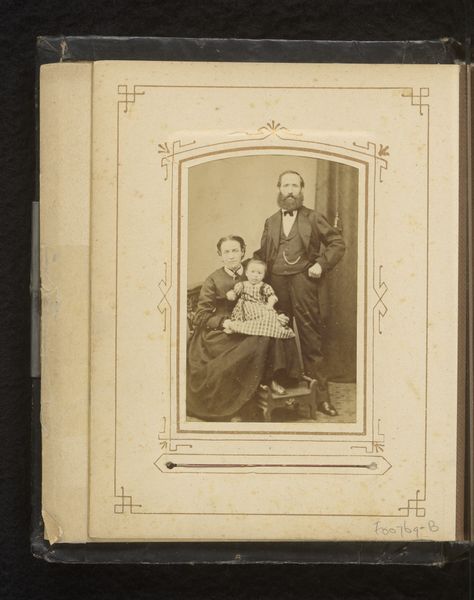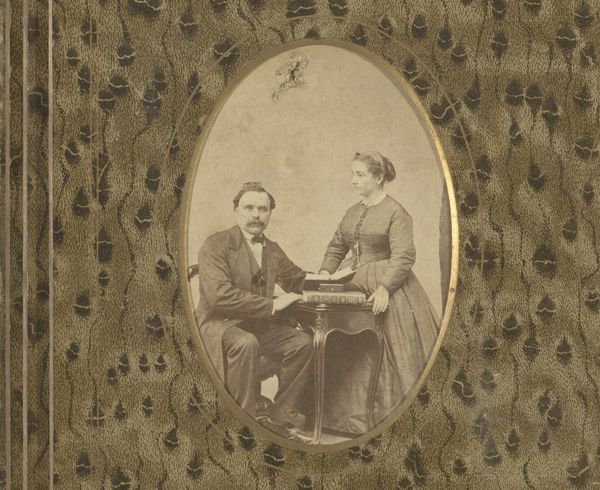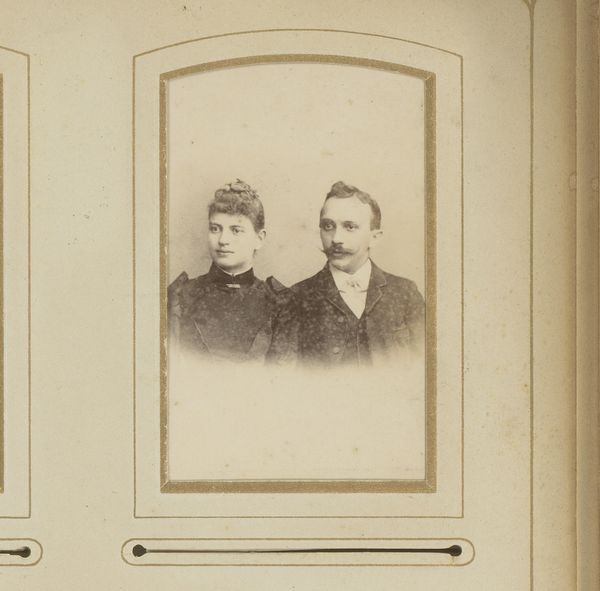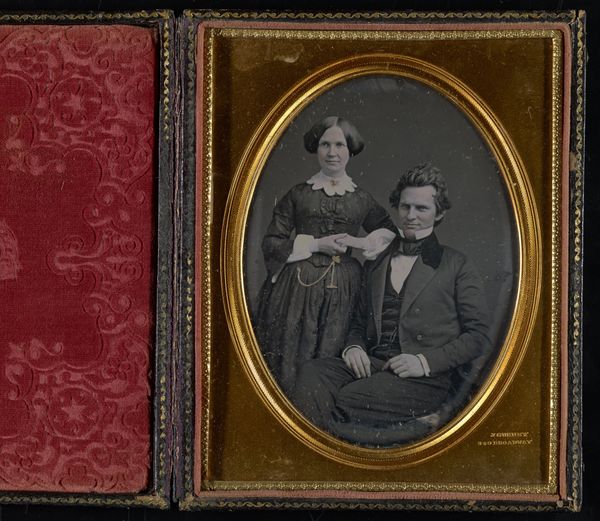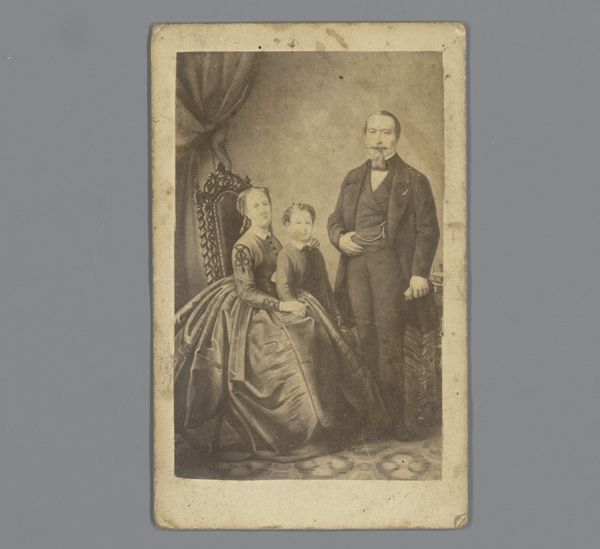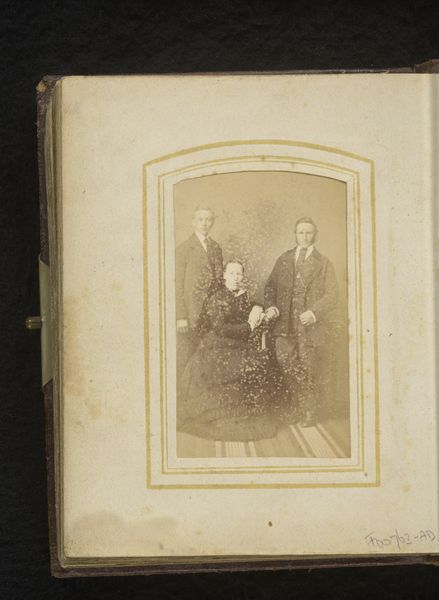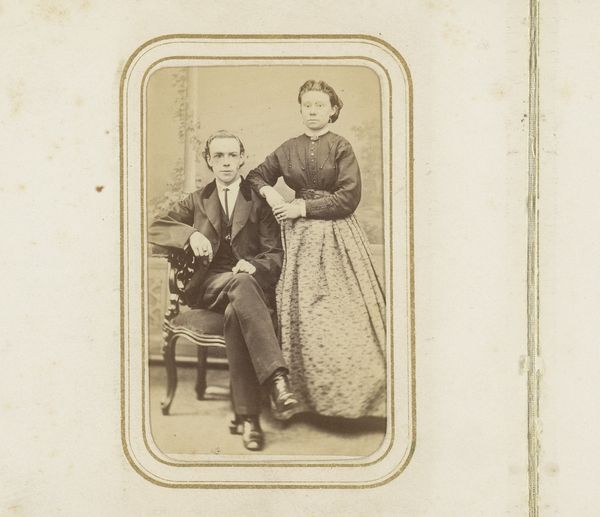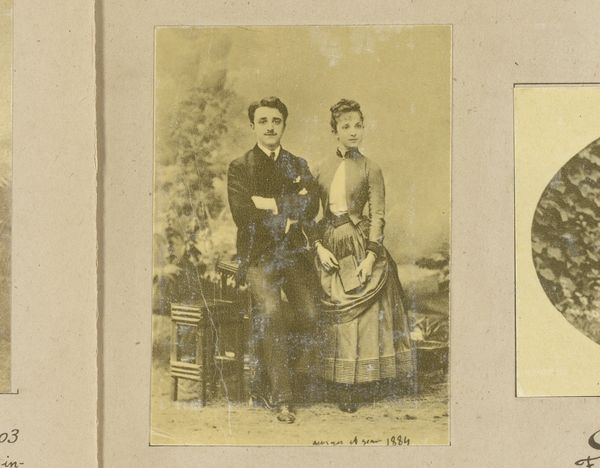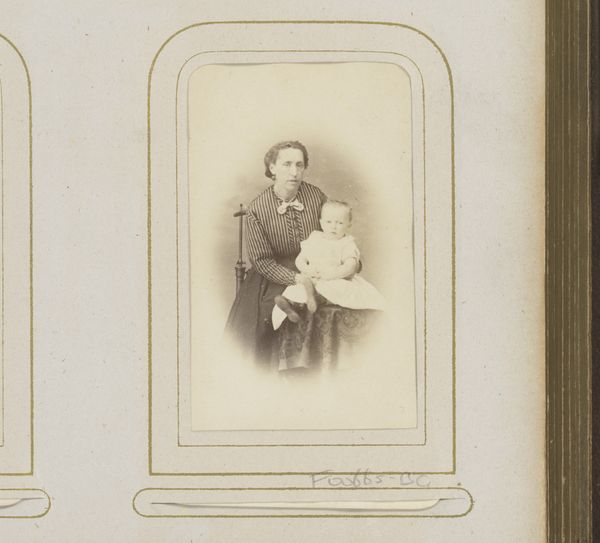
photography, gelatin-silver-print
#
portrait
#
photography
#
gelatin-silver-print
#
genre-painting
Dimensions: height 82 mm, width 50 mm
Copyright: Rijks Museum: Open Domain
Curator: Here we have a piece attributed to A. Böeseken, likely from 1878, titled "Portret van een zittende vrouw en een staande man," or, "Portrait of a Seated Woman and a Standing Man". It's a genre portrait captured using the gelatin-silver print process. Editor: Haunting! Right off the bat, it's the stiff formality of the two figures. She's seated, but unrelaxed. And he’s looming there, rigidly upright. It feels like looking into a bygone era, like a pressed flower in a very old book. Curator: Indeed, the composition itself emphasizes this rigidity. Observe how the verticality of the man contrasts with the seated woman, yet their gazes meet the viewer head-on, creating a sense of unflinching directness. Semiotically, their attire speaks volumes about their social standing and the era's conventions. Editor: Conventions that seem a little soul-crushing, maybe? Look at her hands, so primly folded. Is that contentment in her eyes, or just… resignation? I wonder about their story, what unspoken rules governed their lives, their expressions—it’s like looking at two characters frozen in amber. Curator: The gelatin-silver print medium allows for a remarkable tonal range. The artist utilizes light and shadow to sculpt their forms, creating depth and dimension. The formal arrangement of figures against a plain backdrop allows minimal distraction from the subjects themselves. Note the texture rendered with the print process – you can see almost every thread and fold. Editor: Right, it’s like they're preserved, aren't they? Yet, I can't help but impose narratives onto them, imagining conversations never spoken, yearnings carefully hidden beneath those immaculate clothes. This kind of historical photography always gets my creative wheels turning. It really humanizes a specific time in history and how that could impact a relationship dynamic. Curator: A very compelling idea. Studying such details enables an intriguing understanding of human expression under very controlled, self-conscious, conditions. This piece serves as a fine illustration of how period norms can dictate composition. Editor: And ultimately, even through all that formality, those glimmers of humanity still manage to seep through. It's rather moving, I think.
Comments
No comments
Be the first to comment and join the conversation on the ultimate creative platform.
